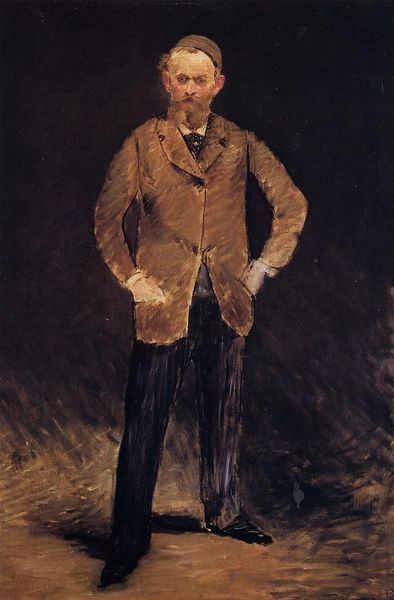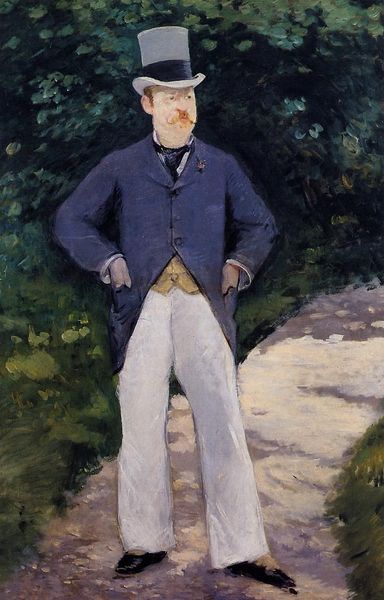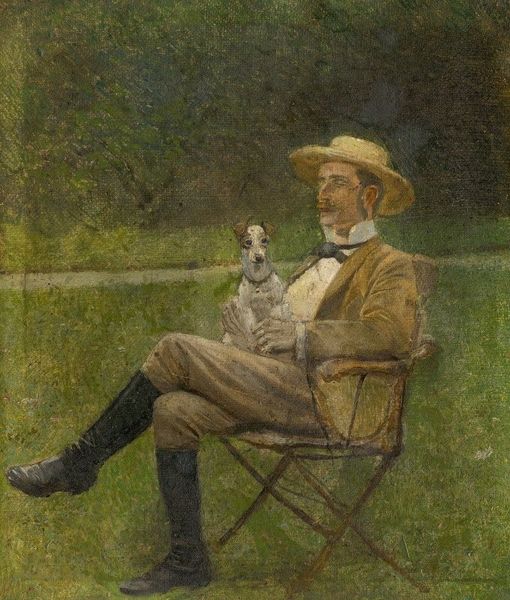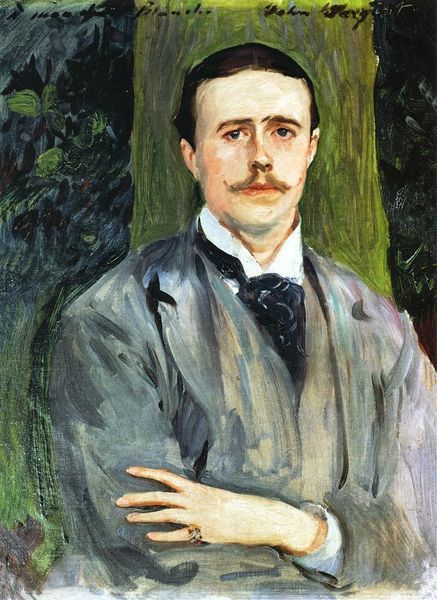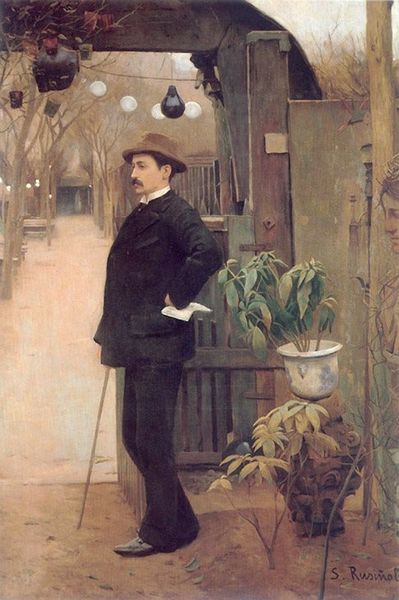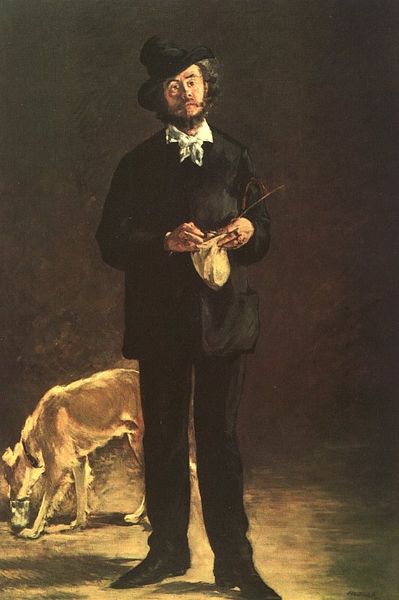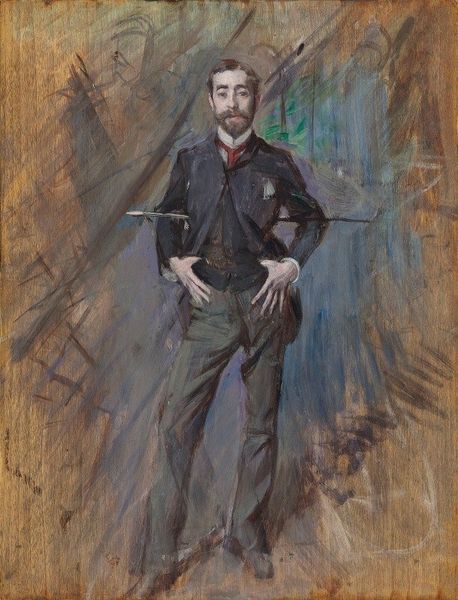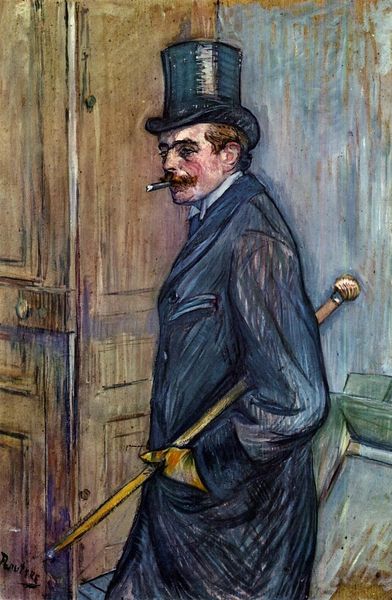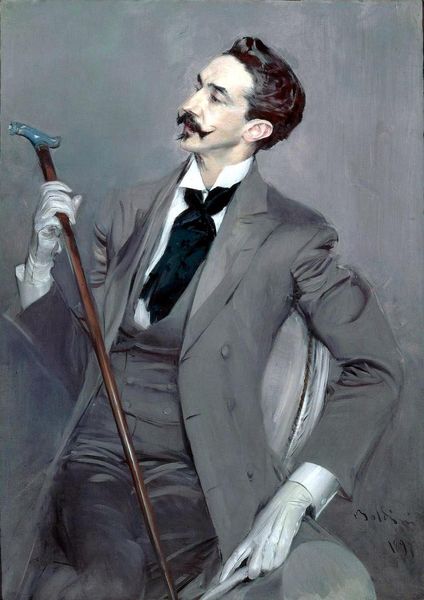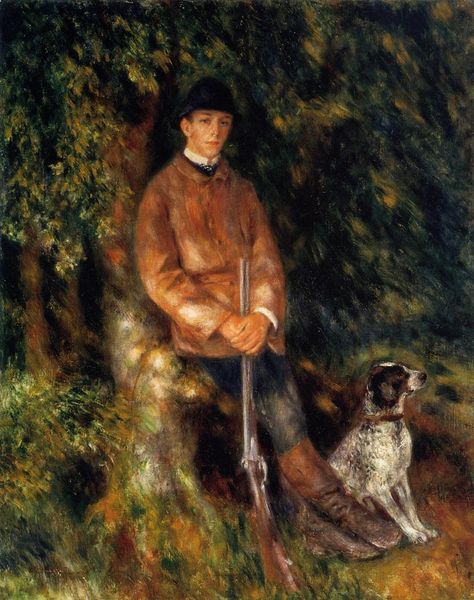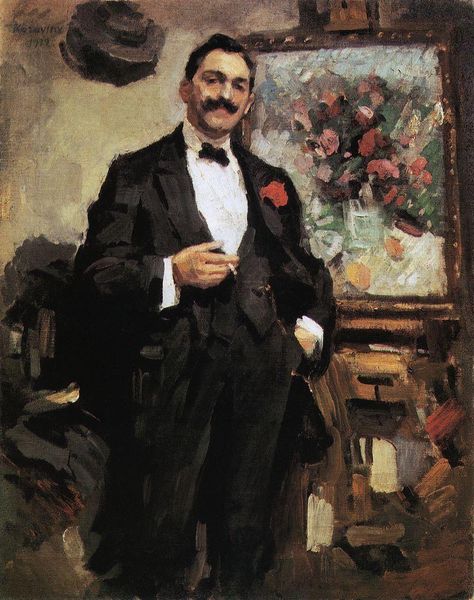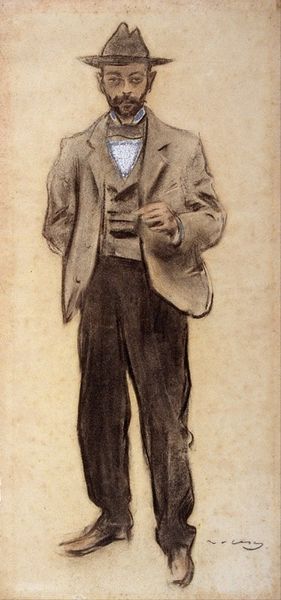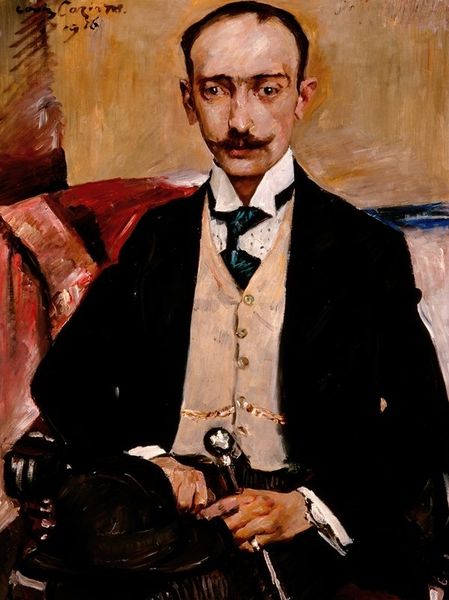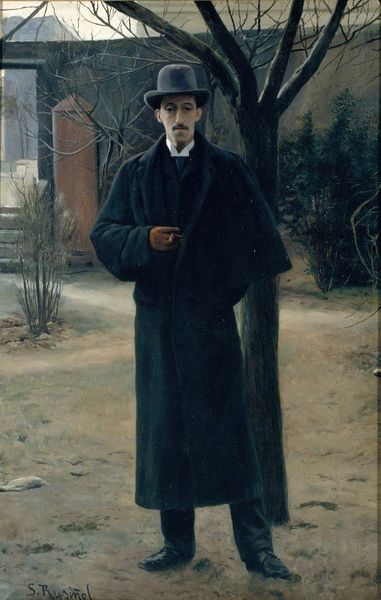
Copyright: Public domain
Editor: So here we have Claude Monet's "Victor Jacquemont Holding a Parasol," painted around 1865 using oil paint. It feels like more than just a portrait; there's a real sense of environment. It gives me the impression of a casual stroll through a park. What strikes you most about this piece? Curator: What grabs me immediately is how Monet utilizes plein-air techniques not just for a landscape, but to situate his subject, Jacquemont, within a very specific social context. The flâneur, the man about town, was a recurring figure in art and literature. The image subtly asks, what does it *mean* to be a man of leisure in mid-19th century France? Editor: That's fascinating, I hadn't considered the "man of leisure" angle. Is that why he's holding a parasol, rather than, say, a walking stick? Curator: Exactly! The parasol, his fashionable attire, even the dog, all signal a particular social performance. Monet isn't just capturing a likeness; he’s commenting on the rise of a certain bourgeois lifestyle, facilitated by industrialization and colonial wealth. Think about how the painting engages with ideas of class and societal expectations that museums themselves embody even now. Editor: It’s interesting how much social commentary can be packed into what seems like a simple portrait. Were paintings like these generally well-received back then? Curator: That's a complex question. Impressionism initially faced resistance. Works like this challenged the established academic art norms and highlighted aspects of modern life that some found frivolous or even unsettling. But eventually they came to represent a pivotal shift in art, as they continue to do for us today. Editor: I never considered how even what an artist *chooses* to paint could be making a statement. Thank you for pointing that out. Curator: Absolutely! Understanding art is also about decoding the values and debates that shaped its creation.
Comments
No comments
Be the first to comment and join the conversation on the ultimate creative platform.
